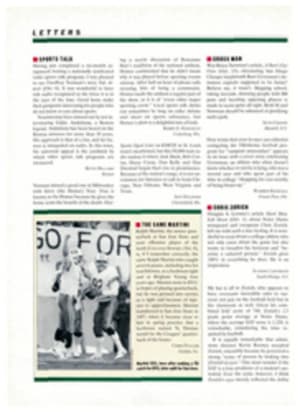
THE RACE THAT ENDED MY RUNNING CAREER
Among the winter sports at Leamington College (England) in the 1950s, the softest option was cross-country; being soft, I opted.
Its lofty moniker notwithstanding. Leamington College was a boys' high school, where the attraction of cross-country was that all you had to do was to run a couple of miles around country roads, after which you were free to go home—usually an hour or so before the stalwarts on the rugby field were finished. With this as an enticement, and being familiar with some shortcuts across the fields that connected the local roads—I took the term cross-country literally—I arrived back at school in good time after a practice. Unfortunately, this was duly noted by the duty prefect (a senior student monitor) called Hancock—first names were a no-no—with the result that I was selected with about 50 others to run for my house in the school cross-country run.
Leamington College was divided into four houses, which competed for the Cock House Cup, a trophy awarded to the house with the top combined score for rugby, cricket, tennis, swimming, track and cross-country. The cross-country scores were decided in an annual 3¼-mile run that involved about half the school, which meant a field of approximately 200.
It was one of the idiosyncrasies of this event that boys from the lowest to highest forms (grades) ran together, so that 12-year-olds such as I were competing with runners as old as 17. Naturally, those of the tenderest years suffered the most humiliating results and thereby became potentially better citizens—or so the theory, not untypical of such places, went. To add to its character-building qualities, the race was always held in winter, when the weather could be guaranteed to be cold, wet and numbing.
The run took place over the Campion Hills, some local undulations strategically interspersed with meadows that for much of the year were waterlogged. Most of the rest of the course consisted of cart tracks that were four or five inches deep in mud, except for one spot adjacent to a five-bar gate where three dozen cows assembled each morning, ostensibly to go to pasture but in truth to bedazzle one another with the volume and pungency of their excreta. There were other obstacles that were just as tiresome—stray briars, for instance, that littered the route like recalcitrant trip wires, and puddles that turned out to be potholes—but none was as picturesque as the site of this daily bovine rendezvous, and the stories of overconfident swells coming to grief there had become part of school lore. As most of the course was covered twice in order to simplify the monitoring of runners, this meant making two passes over this hazard.
The only advantage I had in all this was that I knew the route intimately, because the field next to the cow pasture was the home of a huge and ancient shire horse called Jasper. I had been friendly with Jasper since my early childhood, when he was rescued from the nacker's yard by the field's owner. I had played among the thistles and cowslips of his field while he nuzzled the back of my neck, and I had combed my fingers through his blond forelocks while he was shod. In his early retirement he would come over to meet me at a gentle trot and later, as he grew older, at a quiet amble. He knew there was always a reward for these attentions: I had discovered he liked umps of brown sugar. The one consolation of taking part in the run was that I could say hello to Jasper on a school day.
The morning of the run, a Wednesday in December, was predictably foul. At school we changed into thin cotton running shorts and shirts trimmed with our house colors, put on regulation gabardine raincoats and shuffled the mile or so to the starting line. There, we deposited our raincoats in huge piles under trees while masters wrapped in duffel coats and scarves sent off those lucky enough to be mere race monitors to their respective staging posts, which were staggered around the course so that runners were never quite out of sight of the four house monitors at each of four posts.
Among those members of my house, Heatley, who were dedicated to competition, the urgency was intense: We were running neck and neck with Strachey House for the Cock House Cup and we had to win the cross-country run. The point system used was complicated, but my house master had worked it out that no member of Heatley could come in lower than 161st.
"Remember," he had said the day before, rapping his desk with his fist to emphasize the point, "162 won't do. What won't do?"
"One sixty-two won't do, sir," we replied with varying degrees of conviction.
We were saying it the next morning in the bleak field on Butlin's Farm, where the run started, saying it as we huddled with our hands cupped to our lips, elbows tight to our sides and knees locked in trembling embrace.
The gun went off, and—depending on one's degree of enthusiasm—we sprang, stumbled or lumbered forward. I set off at a stagger, a running style perfectly adapted to a terrain of hassocks, furrows, ruts and clubfooted trees. The older boys streaked ahead, and what started out as a mass of bodies soon settled down to a steady stream. To my surprise. I discovered that my performance was not totally unrespectable.
Approaching the five-bar gate. I saw that what was usually a mire had been turned by the passage of so many feet into a virtual cesspool, and that it had claimed several victims—among them, I was glad to see, the villain Hancock. Experience had taught me that the best way to negotiate this mess was to pass as close as possible to the briar hedge opposite the gate. It was slow but sure, and having passed it without damage, I yelled out, "Jasper!"
As the iron railing beyond the cow pasture came into view, I saw that Jasper wasn't there, and it occurred to me that perhaps the presence of so many people that day was keeping him on the other side of his domain.
But as I got closer I saw that he was in the middle of the field, lying on the ground with his owner and a local vet hovering over him. I called out "Jasper!" again, and I slowed my pace so that I was almost running on the spot. His owner started to move toward the fence when we were both startled to hear the stentorian tones of the second master, as the deputy principal was called, bellowing, "You, boy! You're here to run!"
Jasper's owner yelled, "He's poorly, son. You'd better keep on going." It was at the end of Jasper's field that the circuit started again, and the Heatley House monitor who was stationed at the junction of the circuit and the straightish home stretch warned me icily that I was endangering the house's chances of victory.
And so I started a spurt, my mouth open and my arms pumping, but it was not the good name of Heatley House that was urging me on. I began passing runners in front of me, and as I again passed the first staging post I heard Heatley House's monitor say, "Good show! Keep it up and we'll make it!"
I sloshed through six inches of water in one field and slithered through six inches of mud in another, and about 10 minutes after leaving it, I was back in the lane that passed the five-bar gate and Jasper's field.
And then, deliberately, I began to slow down so that when I got to the iron fence I hoped it would seem as if I was suffering from fatigue and not malingering. Runners I had passed, passed me, some half-turning to glance curiously at this change of pace. I maneuvered the mess by the gate successfully once again and moved up the lane at a painfully slow jog, and as Jasper's field came into sight so did he.
Or his carcass did. He was being hauled from the field by a tractor, his massive legs stupidly half-hoisted by ropes and his great head and body bumping across the gray-green grass.
I was jogging slowly sideways to watch this, knowing that I mustn't even appear to be resting. Runners slogged on behind me, more and more of them.
"Boy!"
The second master had decided to investigate the unscheduled annoyance taking place in the field and was standing at the end of the iron railing, glowering. To impress the second master, the Heatley House monitor shrieked, "You're going to ruin it for us!"
In the field, Jasper's owner turned in my direction, wiping her hands on her apron and shaking her head.
Then from the corner of my eye I saw a Strachey House straggler, who, close to the home stretch, had found a comfortable stride and was running in a kind of happy trance. I took off after him, ignoring the silent sneers of the house monitor and the second master as I ran by them. Halfway down the home stretch I came abreast of my Strachey rival. I could feel the skin of my neck and face grow taut as we turned the last few yards into a mad sprint. Just feet before the finish line, he pulled a step or two ahead and crossed it.
I overran the line, tripped and fell face down into a soggy mixture of mud and grass. Someone came and pinned a number to my back, but no one asked me if I was all right, and no one came to help me up. When I did get up, I was crying. Hancock, limping nobly, said with cold disgust. "Stop blubbing, you're not hurt."
I pulled the number off my back and looked at it: No. 162. One sixty-two won't do.
I never ran competitively again.
Horses have died on me at tracks in Europe, Australia and America in the intervening years, but I have never cried for one again.
ILLUSTRATION
THOMAS WOODRUFF
Early on, my performance was not unrespectable.
ILLUSTRATION
THOMAS WOODRUFF
Jasper was in his field, lying on the ground.
Ben Harte is a copy editor at "People" magazine.

